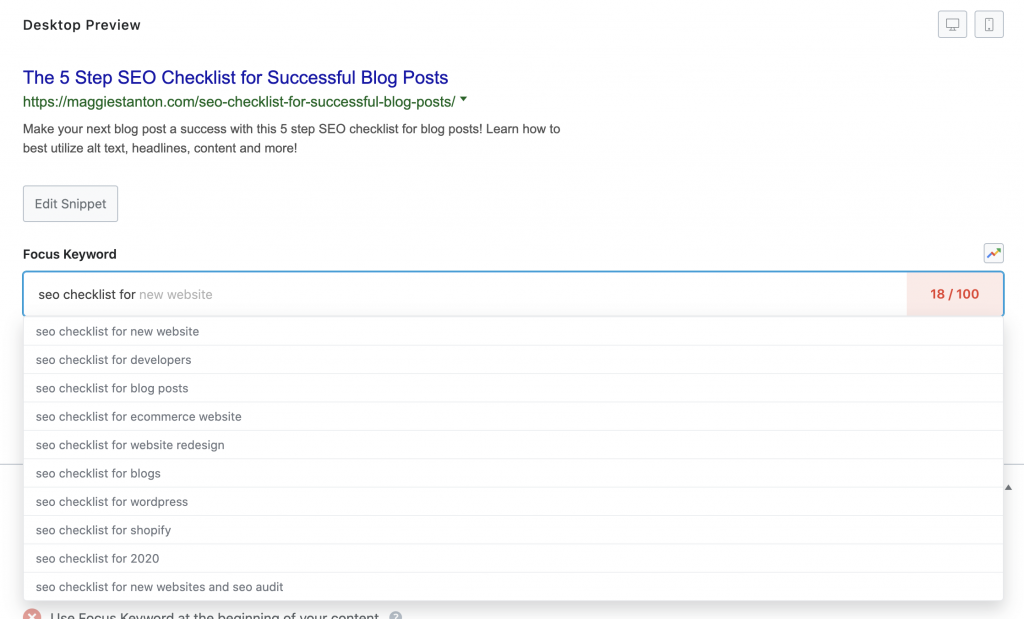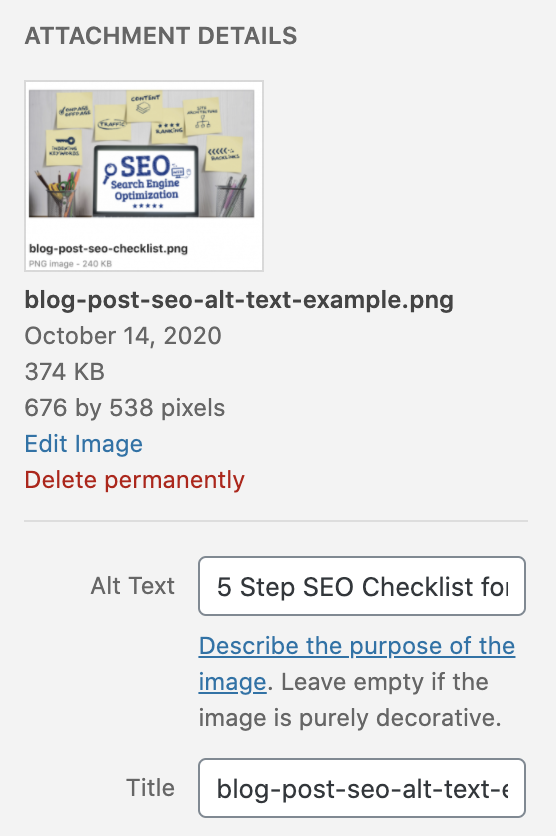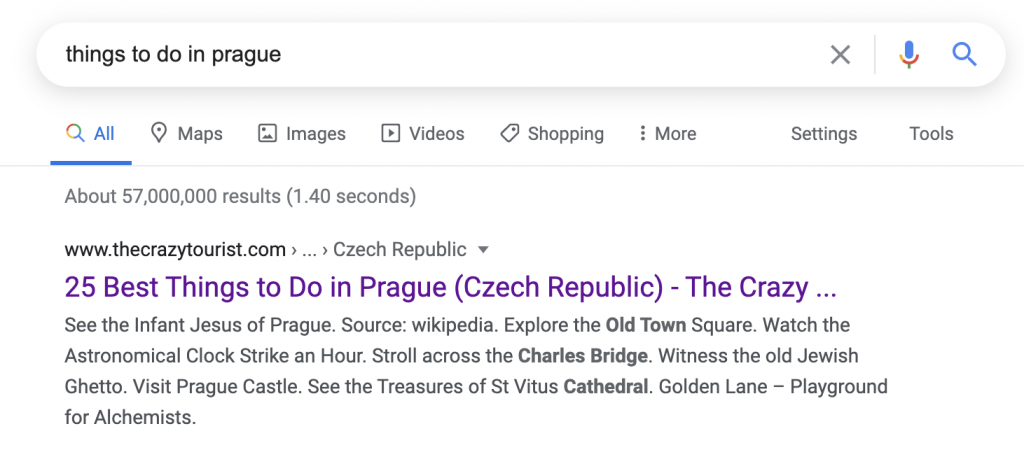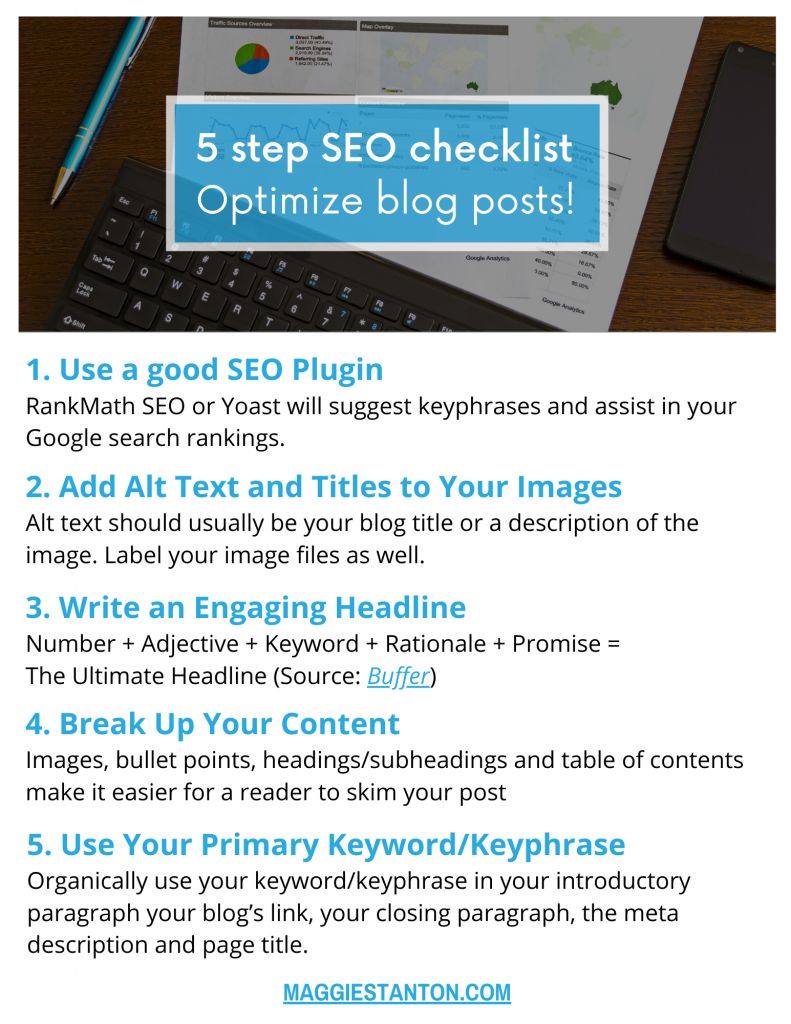If you’ve ever read an SEO guide on creating the perfect blog post that left you more confused than when you started, I sympathize. Blog post SEO doesn’t have to be a complicated science. We’re not finding a cure for baldness. In fact, if you’re me, your posts are usually just nonsense to act as a temporary distraction from… you know… the world.
So why reinvent the wheel? I’ve compiled 5 simple steps for SEO blog posting success that are easy to implement and don’t involve using 10 keyword researchers, a focus group and every social media platform ever.
The 5 Step SEO Checklist for Successful Blog Posts
1. Use a Good SEO Plugin
I’m partial to a good WordPress plugin because I am a lazy woman who wants the guesswork taken out of almost everything. Same reason I ask waiters for their recommendations at restaurants. I trust their powers, not mine.
Yoast is a popular SEO plugin, but I’m more inclined to go with RankMath SEO. While Yoast can only provide one focus keyword, RankMath provides five. They’ll even suggest keywords and phrases based on your content. Not to mention the ranking (located to the right of the focus keyword search). The goal is to get as close to 100/100 score. That’s when you know your post plus is keywords/keyphrases are in perfect sync.

2. Add Alt Text and Titles to Your Images
It should look a little something like this…

I tend to make my alt text one of two things; my blog title if the image is irrelevant (like my post image, for example), or a description of what you’re looking at, in this case an alt text image example.
You also want to label your images. Don’t just upload “IMG.298743” or whatever your computer has named it. Use dashes for the spaces and be descriptive. In this case, this image is named “blog-post-alt-text-example” This further helps SEO, as Google checks image titles when ranking blog posts.
3. Write an Engaging Headline
If you’re lazy, Buffer has the ultimate headline formula on lock…

So let’s say you’re writing a blog about InstaPot dinners. Your headline might go something like, “8 Simple InstaPot Recipes That Will Change How You Cook Dinner.” Bit click-baity, but it gets the point across, no?
The folks at Upworthy write 25 headlines and then use science and geekery to narrow down the winner. You don’t have to be that intense. I tend to use a combo of Buffer’s formula and my audience that I’m writing for. It takes a bit of the click-bait out of the equation.
But then again sometimes I post garbage like this…

Which may negate everything I just said. * shrugs *
4. Break Up Your Content
Imagine if this post was just one endless slog of words and nothing more. You’d set your laptop on fire and never visit my site again. I wouldn’t even blame you.
Images, bullet points, headings/subheadings and (my favorite) table of contents break up your content, make it easier for a reader to skim your post and lights a fire in Google’s search engine heart.
Here’s a good example. This is the first result I got when I searched “things to do in Prague.”

We immediately notice a similar headline formula to Buffer’s. Nice!
When I click the post, I notice this…

Numbered subheadings, text broken up by labeled images, be still my heart. No wonder this blog post ranked #1 in my search results.
5. Use Your Primary Keyword/Keyphrase
Use it in your introductory paragraph your blog’s link, your closing paragraph, the meta description and page title. But uh… do it organically. Google frowns upon keyword stuffing. So back to that InstaPot example. If your copy is just, “8 simple recipes for dinners in InstaPot because InstaPot dinners are simple like my 8 simple InstaPot recipes for simplicity,” Google won’t like it. Your readers probably won’t either. It’s a lose-lose strategy.
Final Thoughts
SEO strategy shouldn’t make you crazy. In fact, if trying to write the perfectly optimized blog post is causing you more harm than good, walk away. Not every post is going to top the search results anyways. And sometimes things just rank for no reason. I did everything wrong with my Manhattan post and it still went viral. I’ve given up trying to understand how.
SEO is really case of do your best, write what you know, and don’t bother paying a so-called expert $10,000 to “optimize your site.” That advice is free, folks.









